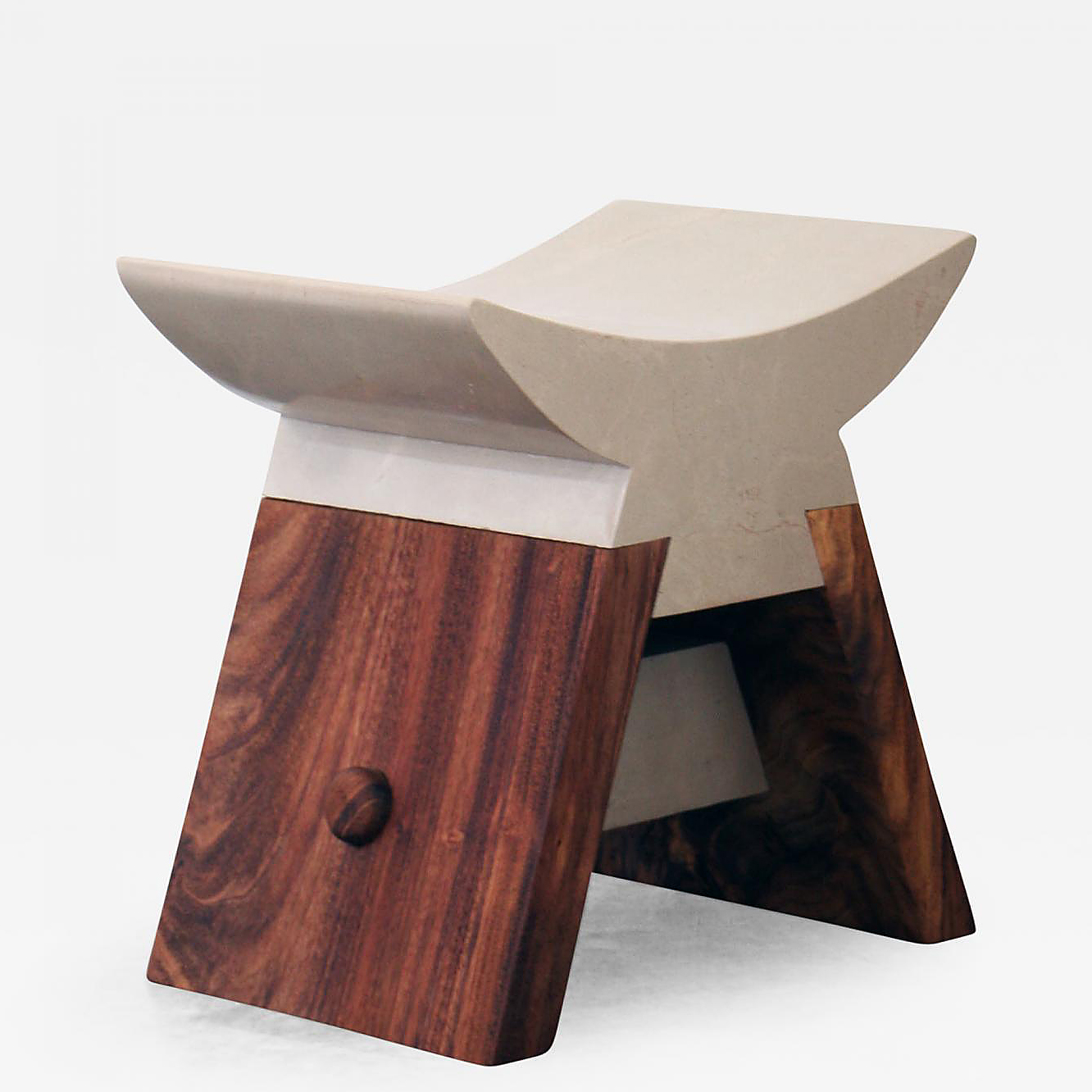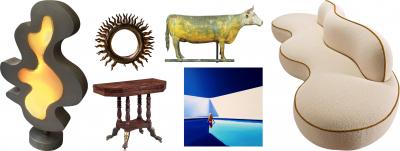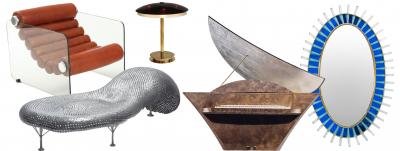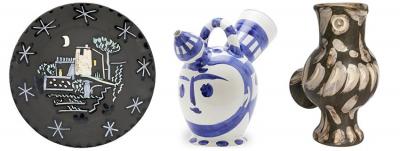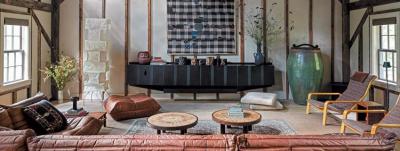Masters of Design Series: Eduardo Olbés
“Beauty, with its multiple hooks and titillating bait, plucks me out of the mud like a ripe catfish.”
— Eduardo Olbés
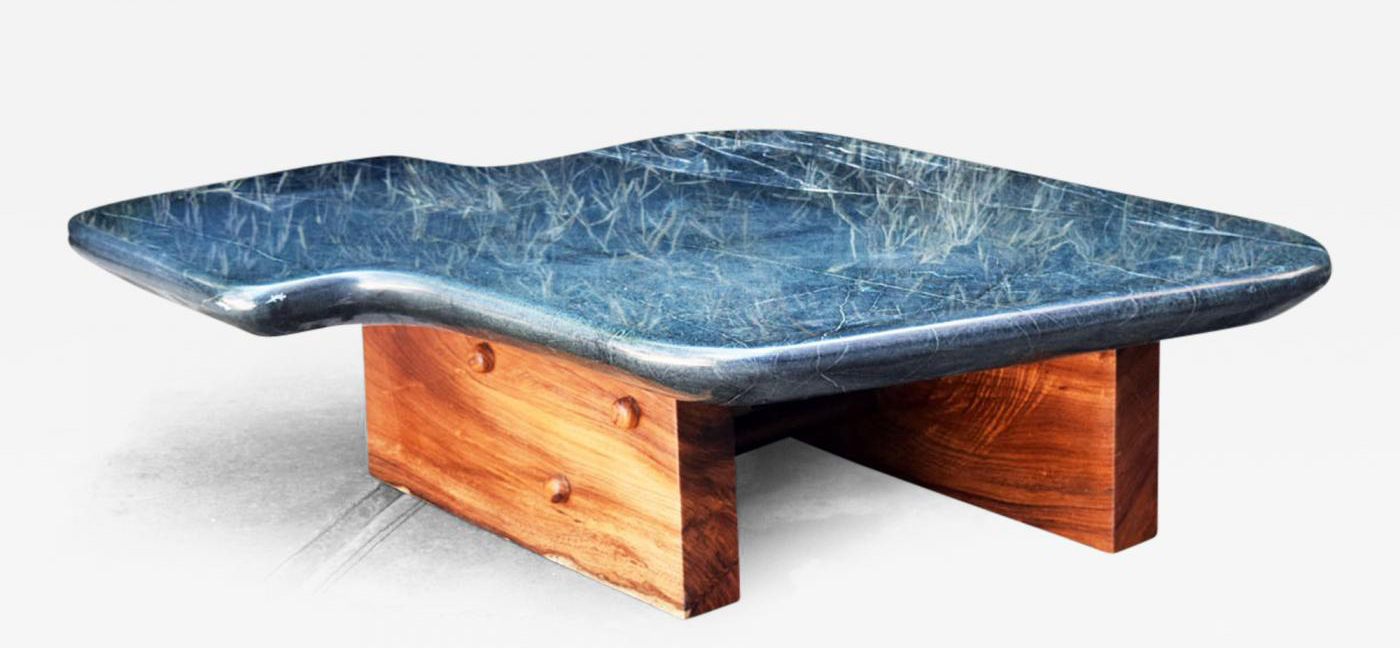
-
Eduardo Olbés, coffee table, 2015. Jade and parota wood. From ADN Galería, in Mexico City.
The sculptor Eduardo Olbés, who operates a workshop in Tepoztlán, Mexico, rejects the distinction between art and design.
“To me, it’s the same banana,” says the Manila-born artist, known as “Uncle Eddie” in Mexico (and as “Ding” in his native Philippines). “There is absolutely no difference in my head or in my hands or in my heart between my sculpture and design. The authorities blithely engage you in these seemingly abstruse discussions on distinctions that I think are spurious, unnecessary. An artist does what an artist does, and sometimes what they produce is useful, and sometimes it’s purely for aesthetic reasons.”
In keeping with this philosophy, much of the work Olbés produces straddles this boundary, incorporating elements of fine art without resorting to “the kind of silly posturing that is so prevalent these days.” This free-standing sculpture from the Smoking Mirror/Pebble Series (2015) was inspired by Tezcatlipoca (“Smoking Mirror”), an Aztec deity associated with the moon, the unconscious and dreams. In this work, Olbés has mounted a 57-inch-wide obsidian disc on a block of Carrara marble, contrasting the geometric form of the plinth with the sinuous contours of the obsidian. The mirror is listing to one side, adding to the sense that the obsidian is not quite solid, a chunk of volcanic rock that has yet to congeal.
“Nobody in Mexico works the way he works,” says Paulo Peña, owner of ADN Galería, in Mexico City. “Nobody is as talented at combining woodworking with materials that are very difficult to carve.”
A few years ago, Peña spotted a piece of furniture designed by Olbés in the home of a collector in Mexico City. “The mixture between wood and stone was perfectly balanced—and very beautiful,” Peña recalls. “I didn’t even know who the designer was. Time passed, and then I found another piece with the same recipe of stone and wood.”
Peña set out to find the elusive artist—and relished the hunt. “Nobody really knew how to find him, or even if he was still alive, but I loved the idea of chasing him.” At last, the gallerist found Olbés in Tepoztlán, two hours outside of Mexico City, where the sculptor had established a trade in bespoke pieces that exploited recalcitrant materials like obsidian, jade, and stone. Olbés was not widely known, because very few people could afford his work. “His pieces were big and heavy and expensive,” says Peña. “Before he worked with us, the only people who would usually buy his stuff were the aristocracy, because they had the money and the space.”
|
|
The unmistakable style of the artist draws on Filipino, American and Mexican influences. Born in Manila in 1951, Olbés was apprenticed to the cabinetmaking shop of Mario Viel, in Manila, at the age of 20. From 1972 to 1974, he studied sculpture and psychology at Goddard College, in Plainfield, Vt., before relocating to Mexico in 1975. After studying wood, stone and metal techniques with Arturo Ramos, Olbés taught woodcarving at Escuela de Diseño y Artesanía, in Mexico City. He established his workshop in Tepoztlán in 1978.
In recent years, Olbés has taken part in a number of group shows under the auspices of ADN Galeria: FOG Design+Art (San Francisco, 2016), Miami Art Basel: Design Curio (Miami, 2015), and Collective Design (New York, 2015). He has also been the subject of solo exhibitions at SilverLens Gallery (Manila, 2016) and Ayala Museum (Manila, 2015).
Olbés brings to his practice a love of his adopted homeland. “He knows Mexico very well,” says Peña. “He knows Mexico better than most Mexicans.”
Or, as the sculptor puts it, “There’s no stone in the Philippines. Mexico has granite, marble, onyx, limestone, obsidian. You name it, this country has it. The center is full of calcium carbonates, and the three thousand miles of the Pacific coast is chockful of granite.”
His aim is not to outdo the ancients, or even to match them, but only to take part in a tradition of stone-carving that has continued for millennia. “When you look at what has been done in the past by the stone-carver, you know you won’t ever come close to that kind of work. I will never be able to do a 160-foot-tall obelisk with a ten-foot-square base, like the Egyptians did. I will never be able to carve a St. Theresa like [Gian Lorenzo] Bernini did for the Vatican. But, it doesn’t really matter, you know why? Because none of these virtuosic expressions have exhausted the possibilities of stone for me. I think stone is still a really viable partner in this quest to make art, to make beautiful things.”
To view more of Eduardo Olbés work, click here.
Olbés is the fourth artist to be featured in a series on makers of contemporary furniture, after Gary Magakis, Jacques Jarrige, and Alexandre Logé.
















